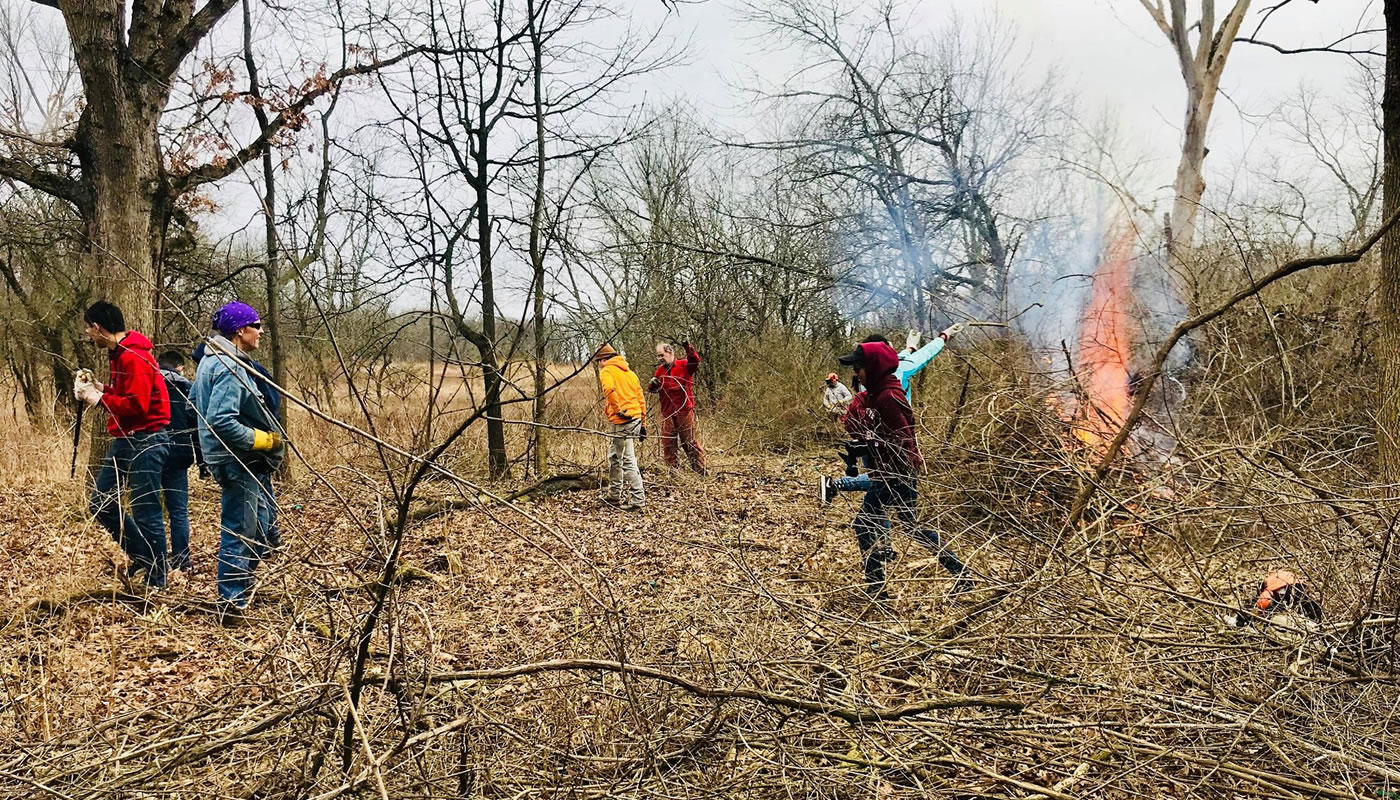At roughly 15,000 acres, the Palos Preserves in southwest Cook County represent the largest concentration of preserved land in the Forest Preserve District’s holdings, with some of the largest and highest-quality natural areas in the District’s portfolio. The volunteers of the Palos Restoration Project have been working with the District for more than two decades to restore habitat for native plants and animals. Their work includes everything from clearing invasive brush to serving on trained crews for prescribed burns.
Started back in 1990 at Spears Woods, the group set the lofty goal of restoring thousands of acres in the Palos and Sag Valley Preserves. Stewards already working at Cranberry Slough Nature Preserve and Cap Sauers Holdings Nature Preserve soon joined the effort. Over the years, other stewards and sites have come on board. Major work is now ongoing at Spears, Cranberry Slough, Cap Sauers, Black Partridge Nature Preserve, Paddock Woods, Hidden Pond, Willow Springs Woods, McClaughry Springs, Swallow Cliff, McMahon Woods and Fen Nature Preserve, Pioneer Woods, Maple Lake and Paw Paw Nature Preserve, as well as several other sites.
The sites have benefited tremendously from the stewards’ work, and that of countless “regular folks” who come out to the regular workdays. At Hidden Pond Prairie, the group worked closely with the District, which supported years of volunteer work with a surge of contractors and interns. “The prairie was a fraction of what you can see today walking by Kean Avenue,” says steward Roger Keller. “It was filled in by dumped yard waste, honeysuckle and buckthorn.” The group recently honored Keller for his eight years as Regional Steward, a volunteer position in which he coordinated the region’s eight site stewards.
“We’re really fortunate to have such a large amount of land here in the Palos Preserves, a lot more mosaic habitat than most places—prairie, woods, slough, meadow all running into one another,” says Diana Krug, a co-leader of the Palos Restoration Project. “It’s a haven for our remaining native plants and animals that can’t survive in the mowed lawns and cement parkways.”
“You have to walk in quite a ways, though we don’t mind that at all,” says Krug. “There’s a great sense of being in the middle of nature at these sites. You’ll hear the bird calls, you will hear an owl, you see a lot of critters because of the bigger habitat.”
Because of their intimate knowledge of their sites, the volunteers have helped the Palos Preserves in other ways as well. At McMahon Woods and Fen Nature Preserve, for instance, Joe Neumann, a longtime steward at several Palos sites and the new Regional Steward, has provided valuable support on a major project to return the site to productive habitat for the federally endangered Hine’s emerald dragonfly. Working with District ecologists, Neumann conducted a tree census, attended planning meetings, reviewed grant proposal drafts, helped coordinate volunteers and interns and is still monitoring site conditions following the large tree removal.
The group faces unique challenges. Because of the size, wealth of opportunities, and relative accessibility of the Palos Preserves, they are a very popular destination. “In some areas, people are ‘loving the eyes off it,’ like the Velveteen Rabbit,” says Krug. “When we clear an area of invasive brush, people want to go there. Bikers and runners want to train on the ravines, on an old trail that was healing up, or picnickers will haul a table to a spot that looks bare to them, but it’s right on top of a patch of trillium. Those rare and sensitive plants need people to be sensitive, in the ravines and creeks especially.” Stewards have worked with user groups to protect several sites. At least one of the leaders of Chicago Area Mountain Bikers is a regular volunteer.
And though the group does draw dedicated volunteers from surrounding communities, one of their goals is to attract more volunteers and stewards, including a younger generation to work with the established stewards. “I especially enjoy working with high school groups, because they’re so enthusiastic,” says Keller. “I enjoy sharing what we’re doing. We have to look to where our next generation of stewards are going to come from.”
“There’s a great sense of camaraderie,” adds Neumann, “but we always make a special effort to welcome anyone who is coming out for the first time and explain the work that we’re doing.”
The Palos Preserves need you, too! Help keep these sites healthy by visiting the Volunteer Page.

